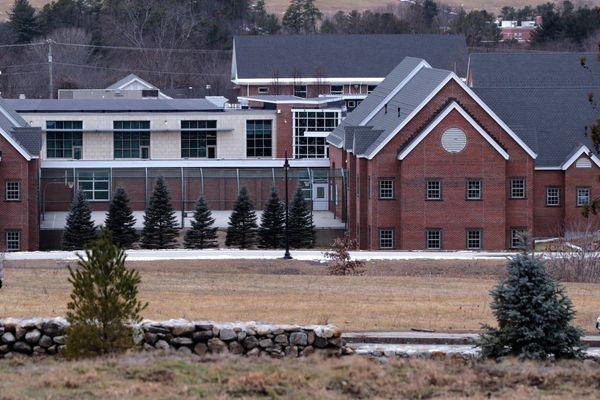
Can anyone lend me £800,000? It’s to buy my grandparents’ family home, the place where my mum grew up, at the top of a steep hill that overlooks the sparkling blue Salcombe estuary in Devon. It is the four-bedroom, Edwardian property that I’ve been walking past for years, pointing out my mum’s childhood bedroom window to my kids, where she made up the stories that she tells them now.
Only it’s now owned as a holiday home by the children of a certain Mary Berry, and has recently been splashed all over the national press.
“Cook in a kitchen where Mary Berry baked!” shout the headlines. But to me this will always be the kitchen where my grandmother baked her infamous coffee and walnut cake; where she reached into the big, draughty pantry with floury hands, while the fire from the black range filled the kitchen with heat.
To say this house weaves a spell over my family is something of an understatement: I have never been inside it myself, but I have tried to imagine what it was like; the smell of wild raspberries, the rag rug in the kitchen knitted by my great grandmother, the electric mangle that my mother and her little brother were warned to leave alone.
My grandparents lived there in the 1950s, less than 10 years before my granddad died. It was the church house for the local chapel where he was minister, and, according to family folklore, it practically saved my grandma’s life, as she had arrived suffering from chronic bronchitis after living through the war in the then-sooty Midlands (the doctor had told her to move to the seaside).
Gradually, the South Hams air revived her, and what followed were long, hot summers straight out of an Enid Blyton book, splashing about on Sunny Cove and Mill Bay, taking the ferry across the bobbing waters to East Portlemouth, the house crammed full of visiting relatives. My grandfather was from coal-mining stock, and after the black slagheaps of the south Wales mining towns, it must have been like slipping into glorious technicolour.
It was my aunty Marianne from Wales who first spotted Mary Berry’s house in the papers, and phoned my mum immediately. Of course, when she visited as a child, there was none of the gleaming kitchen wizardry that Mary Berry’s wealth has allowed for. Instead, it was a modest family home. My grandfather wrote his sermons upstairs in the study, while my grandma shopped on the high street. My mum and uncle went to the school down the hill. Salcombe was a thriving, if workaday, little community. The houses on Island Street – which now sell for around half a million and rent out in the summer for around a grand a week – were then 10-in-a-bedroom slums. Kids used to play on the street barefoot.

In its own way, the house tells the story of our times; perhaps the most important story of all: how once-normal family homes have turned into grotesquely priced investment pieces that only the privileged and well-heeled can afford. Second homes are a particularly pernicious example of this, and nowhere is this more evident than in Salcombe, where locals have been devastatingly priced out of the area. (Speak to any of the locals nearby and you get some taste of the anger.)
When I was 18, I spent one summer working as a chambermaid in the nearby Gara Rock hotel, and I can remember how even back in the late 80s people complained about what was happening in Salcombe. I remember the hotel occupants too, in their boating shoes and Breton tops, and how I served them cream teas and eavesdropped on their conversations as they muttered about the costs of mooring their yachts. “Well, we’ve bloody well worked for it,” one particularly well-dressed lady said. As if no one else had.
My grandparents moved away from Salcombe when the church moved him to a parish in Somerset. But every year we returned, and we still return now. Nowadays the Old Manse boasts a state-of -the-art kitchen which has been lovingly photographed and splashed in glossy colour. The fireplaces are still there, but from what I can see, the scullery and pantry are gone. According to the Telegraph, Mary’s children are selling the house because they want a property closer to the sea so they can “more easily indulge their passion for sailing”.
Sixty years on, three of its four 1950s occupants are dead: my grandma, my granddad and my uncle. But I still like to close my eyes and imagine the house just as my mum describes it: the fruit trees, the snails in the garden, the scullery and the pantry, and the scent of lilacs, overpowering everything.







